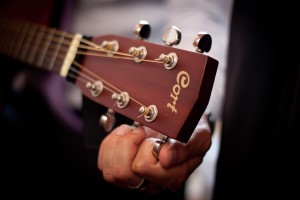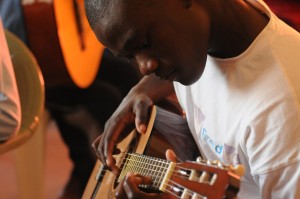There are questions coming in about tuning to A=432. What is it and how is it different than our standard tuning? I’ll try to take off the nerdy classical musician hat and give some easy instructions for those who want to use this tuning.
 FIRST – our standard concert pitch of A=440 affects every note that is tuned. Again, remember that for concert pitch, one note is tuned and then all other notes are tuned off that one note. In order to do this, you’ll need a specific frequency or a tuner that will make that adjustment. This Chromatic Korg Tuner will allow the concert pitch to be changed from as low as A=410 all the way up to A=480. This is done by changing the calibration. Since the standard is A=440, you’d press the calibration button down until A=432 is reached.
FIRST – our standard concert pitch of A=440 affects every note that is tuned. Again, remember that for concert pitch, one note is tuned and then all other notes are tuned off that one note. In order to do this, you’ll need a specific frequency or a tuner that will make that adjustment. This Chromatic Korg Tuner will allow the concert pitch to be changed from as low as A=410 all the way up to A=480. This is done by changing the calibration. Since the standard is A=440, you’d press the calibration button down until A=432 is reached.
If you want a table of frequencies for the A=432 concert pitch, use this page from Michigan Technical University. Be sure that A=432 is selected so the correct frequencies are showing. Then, go look for the notes that you want specific frequencies for. If you want another tuning such as A=444, click on A=444 and all the numbers will change to fit within that concert pitch.
If you don’t want to spend the bucks on a tuner, here’s a VIDEO with all the pitches for guitar players in the A=432 concert pitch. However, in this video, they tune from top to bottom, which is probably going to be more difficult. Tune from the bottom up.
SECOND – questions about temperament shouldn’t really play into this unless you do not want to use equal temperament. Remember that temperament has to do with the distance between notes, not the actual pitch of a note. Most of the standard tuners are set up to work only in equal temperament. However, there are some ways around that, which I’ll go over below.
 Guitar players, here’s a VIDEO of a guy tuning a guitar starting with a tuner for each note and then finishing with tuning each of the higher notes from a lower note. What this does is allows you to make the small adjustments so the guitar is perfectly in tune. An item to note… once you’ve tuned the guitar to itself, it’s no longer in equal temperament. By tuning to the lowest note, you’ve just made the adjustment from equal temperament to a form of “just intonation.” It’s a different temperament that makes the open strings in tune with one another. However, guitar players probably don’t realize this is what they’re doing when they tune the instrument to itself after the tuner is put aside.
Guitar players, here’s a VIDEO of a guy tuning a guitar starting with a tuner for each note and then finishing with tuning each of the higher notes from a lower note. What this does is allows you to make the small adjustments so the guitar is perfectly in tune. An item to note… once you’ve tuned the guitar to itself, it’s no longer in equal temperament. By tuning to the lowest note, you’ve just made the adjustment from equal temperament to a form of “just intonation.” It’s a different temperament that makes the open strings in tune with one another. However, guitar players probably don’t realize this is what they’re doing when they tune the instrument to itself after the tuner is put aside.
Piano and wind players, tuning and temperament are pretty much set for your instrument unless… you have an electronic keyboard that can make these adjustments. The Casio Privia 350 is probably the best instrument for the price that has the ability to adjust in BOTH concert pitch and temperament. Wind players are pretty much stuck with A=440 unless you are able to purchase a “period” instrument that’s fashioned after an instrument from the time of Mozart or Beethoven. The good part of this is that wind players can make adjustments with fingers and change of embouchure (how the instrument is held in the mouth) to bring a pitch up or down (a form of tempering) as needed.
If you have other helpful tools and or know of other tuners or instruments that I’ve not suggested, please post that information below.
[mailerlite_form form_id=2]

